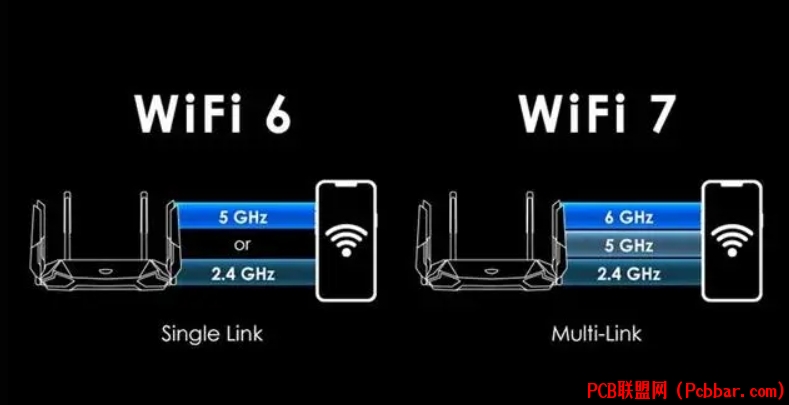|
WIFI7-802.11be/EHT-IPQ9574-IPQ9554-QCN9274-QCN6274 support-320/240MHz and Multi-RU technology WiFi7 is the latest generation of WiFi protocol standards, also known as IEEE 802.11be/EHT (Extremely High Throughput). Support for three frequency bands (2.4 GHz, 5 GHz and 6 GHz) to make the most of spectrum resources. WiFi 7 introduces 320 MHz ultra-wideband, 4096-QAM, multi-RU and multi-link operations, offering speeds 4.8 times faster than WiFi 6 and 13 times faster than WiFi 5. Unlock more scenes than ever before.


320MHz channel bandwidth With the opening of the 6 GHz band to Wi-Fi applications, Wi-Fi 7 supports up to 320 MHz channel bandwidth on the 6 GHz band, It also supports 20/40/80/160 MHz channel bandwidth in the 5 GHz and 6 GHz bands and 20/40 MHz in the 2.4 GHz band. The channel bandwidth of just 320 MHz doubles the maximum speed of Wi-Fi 7 compared to existing Wi-Fi 6/6E. Multi-RU Under the WiFi 6 protocol, each user can only send or receive frames on a specified resource unit (RU), which significantly limits the flexibility of spectrum resource scheduling. To address this issue and further improve spectral efficiency, WiFi 7 allows multiple RU to be assigned to a single user and can be combined to improve transmission efficiency. 320/240MHz and Multi-RU are two concepts associated with the Wi-Fi 6E (802.11ax) standard. Let me tell you about each of them: 320/240MHz: 320MHz and 240MHz refer to the wireless spectrum bandwidth available in Wi-Fi 6E. Wi-Fi 6E is an extended version of Wi-Fi 6 (802.11ax), and its biggest feature is the ability to operate in the 6GHz band, which is wider than the traditional 2.4GHz and 5GHz bands and can provide greater bandwidth. 320MHz and 240MHz refer to the spectrum bandwidth available in the 6GHz band, respectively. 320MHz bandwidth is wider and can provide higher data transmission speeds, but requires more wireless channels to support it. 240MHz is slightly narrower, but still has more bandwidth than the traditional 2.4GHz and 5GHz bands. The 320/240MHz spectrum bandwidth is primarily a feature of Wi-Fi 6E, as it refers to the spectrum bandwidth available on the 6GHz band. Wi-Fi 6 (802.11ax) typically operates in the 2.4GHz and 5GHz bands, and its maximum bandwidth is usually 160MHz. This is why Wi-Fi 6 typically does not use 320/240MHz spectrum bandwidth. Multi-RU: Multi-RU refers to the use of multiple Radio units or Radio links. In Wi-Fi 6E, devices are typically equipped with multiple RF units to support greater spectrum bandwidth and higher performance. Multiple RF units can be used to transmit and receive data simultaneously to improve the throughput and efficiency of the network. This is useful for dealing with high-density network environments and a large number of device connections, as it can alleviate network congestion issues. Multi-RU technology can also be used to better manage multiple wireless channels to provide more reliable connections and lower latency. Multi-RU technology is typically used in more complex network environments to support multiple RF units or RF links to improve performance and reliability. While Wi-Fi 6 can also benefit from Multi-RU technology, it is typically more common in large-scale enterprise networks or high-density environments, while Wi-Fi 6 routers used in home or small office networks typically do not feature Multi-RU configurations.
|  /1
/1 